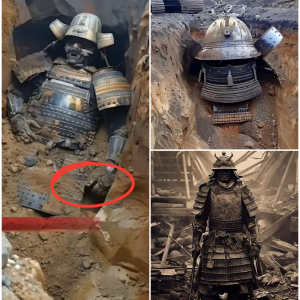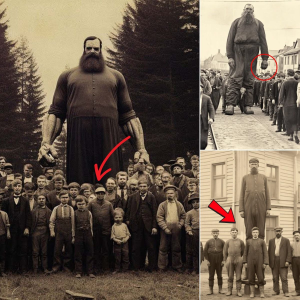A temple room including the remains of three standing pillars and many curious artifacts that date back to the seventh century BC have been uncovered from under a mound at the Tel al-Faraeen archaeological site near Alexandria, in Northern Egypt.
Prostitution, One of History’s Oldest Professions!
The Egyptian Ministry of Tourism and Antiquities has just issued a statement on their Facebook page revealing an important discovery recently made at the Tel al-Faraeen archaeological site in northern Egypt’s Kafr El Sheikh governorate. While performing excavations at the site, they have now uncovered a pillar or column hall.
The Buto temple was excavated from one of three ancient mounds that have been discovered at the Tel al-Faraeen site (the name ‘Tel al-Faraeen’ literally means ‘mounds of the pharaohs’). The remains of the mud-brick walls of the Buto temple were first unearthed during digs that took place in 2017 and 2018, along with foundation stones from two limestone columns.
Inside the temple the excavation team discovered two damaged statues that were identified as representations of the King Psamtik I, the first pharaoh of Egypt’s 26th Dynasty who served as ruler from 664 to 610 BC.
Following these initial discoveries, archaeologists affiliated with Egypt’s Supreme Council for Archaeology continued to dig in search of more ruins and artifacts from the temple of Buto. It took a while, but in 2022 they were finally able to uncover the remnants of three limestone columns that would have formed part of the temple’s pillar or column hall.
- Ancient Egyptian Pharaohs Had a Shepherd of the Royal Anus
- Not Just a Pretty Face: Cleopatra Was a Genius Who Spoke 9 Languages
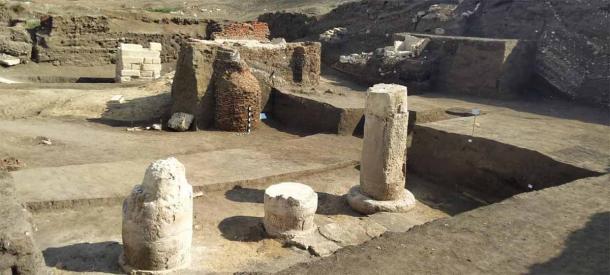
Pillar Hall at Buto Temple ( Ministry of Tourism & Antiquities )
The General Secretary of the Supreme Council for Archaeology, Dr. Mustafa Waziri, stated that this discovery represents “an important scientific and archaeological addition to understanding the architectural planning of the temples area of Buto.”
The overall temple complex covers 11 acres in total, and appears to have functioned as a regional religious Mecca.
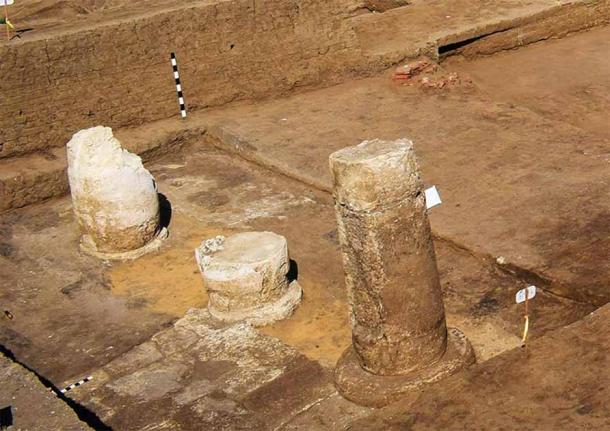
Discovered in 2017, these pillars took years to finally uncover completely. ( Ministry of Tourism & Antiquities )
A Treasured Religious Sanctuary Revealed
The remains of the column hall were found at the southwestern corner of the temple. The three newly discovered limestone columns or pillars were installed on a north-south axis, creating the outline of an enclosed space that measured 15 feet by 21 feet (4.5 meters by 6.5 meters) from the columns to the nearest wall.
During their ongoing explorations the archaeological team also found a painting of a bird’s head topped with a white feathered crown on a limestone plaque. They speculate this may represent a goddess of death , or an idol worshipped by elites. The archaeologists also found vessels used to make offerings to the gods, along with a raised area featuring a wall of bricks that may have been used as a protective space for small statues.
In addition to everything related to the column hall, they also found the ruins of a huge stone building, artifacts relating to daily rituals and religious rites performed at the temple, and pieces of artwork consisting of hieroglyphic paintings, various gold items and illustrations on pieces of ivory.
- Digital Scan of Ancient Egyptian Mummy Amenhotep I Shows His True Face
- The Forgotten Kingdom of Kerma and Its Incredible Deffufas
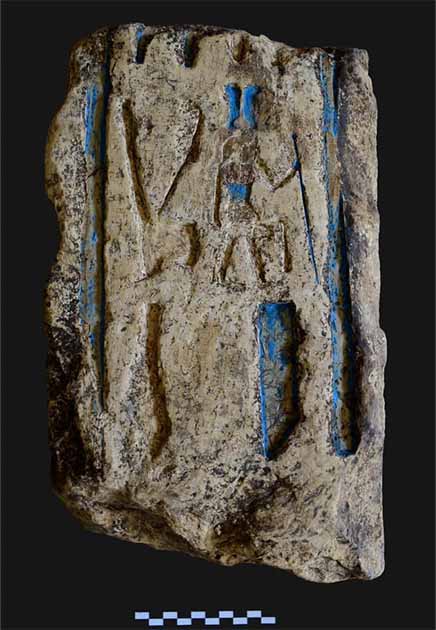
One piece of ivory bearing hieroglyphic paintings. (Ministry of Tourism & Antiquities )
The head of the archaeological mission, Dr. Hossam Ghanim, expressed his intention to continue the current round of excavations. He said his team hopes to uncover more finds that will reveal more hidden secrets about the complex civilization of ancient Egypt.
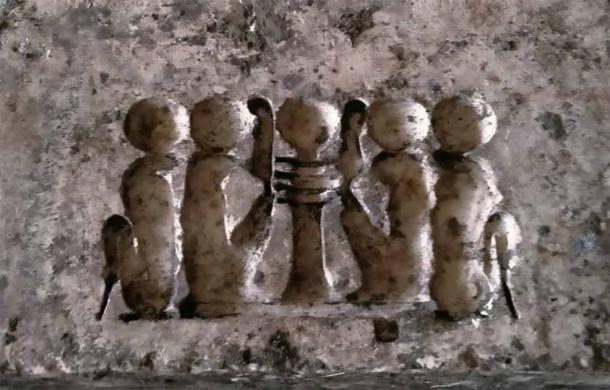
Curious engraving found at the Buto temple. (Ministry of Tourism & Antiquities )
Worshipping at the Ancient City of Buto
The ancient northern or Lower Egyptian city of Buto can be found approximately 60 miles (95 kilometers) southeast of Alexandria, in the Nile Delta region. Its temple complex is the highlight of the archaeological ruins that have been unearthed at the Tel al-Faraeen site, and it is here that information has been collected about the spiritual practices of the people who either lived there or traveled there during the seventh century BC.
Evidence suggests the ancient city of Buto was never heavily populated, despite being identified as a highly valued settlement during ancient Egypt’s Late Period (664-332 BC). But it seems the place did draw the attention of religious worshippers, and for quite some time.
Buto continued to be a destination of some importance during subsequent eras, as the excavations that have taken place at Tel al-Faraeen since the 1960s have found the ruins of cemeteries, houses, baths and temples from the Ptolemaic (305-30 BC) and Roman (30 BC – 641 AD) periods of Egyptian history. This is in addition to what they’ve discovered dating to the Late Period, when the temple was undoubtedly a popular gathering place for the spiritually inclined.
Interestingly, further archaeological evidence has been recovered that suggests that Buto was occupied for approximately five centuries during Egypt’s predynastic period (5,500 to 3,100 BC). Since it could be linked to the very dawn of Egyptian civilization, it was only natural that Buto would have come to be recognized as a sacred location suitable for the construction of a large temple complex.
Serious excavations have been taking place at the location of ancient Buto for seven decades. It is remarkable that the Tel al-Faraeen site is still producing exciting and enlightening new discoveries, and it seems that may continue to happen for many years to come.
Top image: Left; Pillar Hall at Buto Temple, Right; Engraved ivory found at the site. Source: Ministry of Tourism & Antiquities
By Nathan Falde




